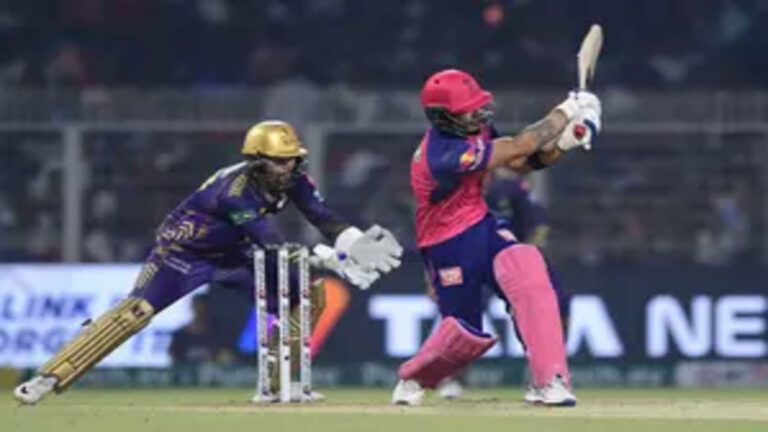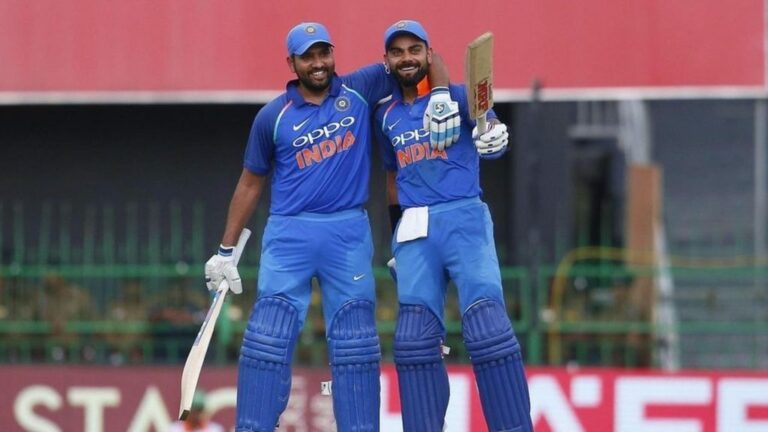Analyzing the Role of Big Data in Cricket Strategy
Online Cricket ID, 11xplay: Data analytics in cricket has undergone a remarkable evolution over the years. What was once a sport heavily reliant on traditional scouting methods and subjective insights has now transformed into a data-driven domain where numbers and statistics play a crucial role in decision-making. With the advent of technology and the availability of various tracking devices, teams have been able to collect a vast amount of data on player performance, match outcomes, and strategic trends.
Cricket teams and coaches are now able to harness the power of data analytics to gain valuable insights into player strengths and weaknesses, opposition strategies, and optimal playing conditions. This shift towards a more analytical approach has not only revolutionized the way teams prepare for matches but has also led to a more informed and strategic approach to team selection, match planning, and in-game decision-making. As the importance of data analytics continues to grow in cricket, it has become clear that those who can effectively interpret and apply data-driven insights will have a significant competitive advantage in the modern game.
The Impact of Big Data on Player Performance
Big data has revolutionized the way player performance is analyzed and optimized in the game of cricket. By harnessing a wealth of statistical information, teams can now delve deep into the performance metrics of individual players, enabling them to make more informed decisions on team selection and match strategies. This data-driven approach allows coaches and analysts to identify patterns, trends, and areas for improvement with greater precision than ever before.
The use of big data in cricket has also paved the way for personalized training programs tailored to address specific weaknesses and enhance strengths in players. By tracking individual player data over time, teams can develop targeted training regimens that focus on improving performance indicators such as technique, stamina, and decision-making skills. This level of granularity in player analysis has not only helped in boosting overall team performance but has also played a significant role in the development of young talent and the longevity of established players.
Utilizing Statistical Analysis for Team Selection
Statistical analysis has become a cornerstone in the modern game of cricket, especially when it comes to selecting the best team for a match. By delving into player performance metrics, such as batting and bowling averages, strike rates, and fielding statistics, teams can make informed decisions based on objective data rather than subjective opinions. This data-driven approach allows selectors to identify players who are in top form and have the highest probability of success in various match scenarios.
Gone are the days when team selection was solely based on reputation or gut feeling. Today, advanced statistical models help cricket teams create a well-balanced squad that can adapt to different game situations. By considering historical data, playing conditions, and opposition strengths and weaknesses, teams can optimize their lineup to maximize the chances of victory. In the highly competitive world of cricket, utilizing statistical analysis for team selection is no longer a luxury but a necessity for staying ahead of the curve.
Improving Match Strategies through Data-Driven Insights
Data analytics has revolutionized the way cricket teams strategize during matches. By analyzing vast amounts of data, teams are now able to gain valuable insights into opposition players’ strengths and weaknesses, as well as identifying patterns in their own performance. This data-driven approach allows teams to make informed decisions on field placements, bowling strategies, and overall game tactics based on statistical evidence rather than intuition.
Furthermore, data analytics helps teams in real-time decision-making during matches. Coaches and captains can access instant data feeds that provide insights on player performance, pitch conditions, and opposition strategy. This enables teams to adapt quickly to changing game situations and make tactical decisions that are backed by data-driven analysis. With data-driven insights guiding match strategies, cricket teams are increasingly leveraging technology to gain a competitive edge on the field.
Enhancing Training Programs with Data Analytics
Data analytics has revolutionized training programs in cricket, providing teams with valuable insights to optimize player performance. Through the analysis of player data such as physical fitness levels, skills proficiency, and injury history, coaches can tailor training sessions to address specific areas of improvement for each individual player. By utilizing this data-driven approach, teams can ensure that their players are receiving personalized training plans that maximize their strengths and target any weaknesses.
Furthermore, data analytics allows coaches to track the progress of players over time, enabling them to measure the effectiveness of training programs and make informed adjustments as needed. By continuously analyzing performance data and monitoring key metrics, coaches can identify trends, patterns, and areas of improvement to ensure that training programs are constantly evolving and adapting to meet the needs of the players. This proactive approach not only enhances player development but also helps teams stay ahead of the competition by leveraging data to drive continuous improvement in training strategies.
Optimizing Field Placements and Bowling Strategies with Big Data
Field placements and bowling strategies in cricket have long been considered crucial elements in determining the outcome of a game. With the advancements in data analytics, teams are now able to make more informed decisions regarding where to place fielders and how to set up their bowlers. By analyzing historical data on different players, teams can identify patterns and trends that help them optimize their field placements based on the specific strengths and weaknesses of the opposing batsmen.
Moreover, big data allows teams to delve deep into the analysis of bowling strategies. By examining data on pitch conditions, weather, and historical performance of bowlers under similar circumstances, teams can tailor their strategies to maximize effectiveness. This data-driven approach enables teams to make more strategic decisions on which bowlers to use in certain situations, when to introduce spin or pace, and how to set fields that pressure the opposition into making mistakes.
The Role of Predictive Analytics in Cricket Strategy
Predictive analytics has revolutionized the way cricket teams approach their strategic planning and decision-making processes. By analyzing a wide array of data points, teams can now predict player performance, match outcomes, and potential game scenarios with a higher degree of accuracy. This allows coaches and captains to make more informed and proactive decisions on the field, ultimately influencing the course of the game.
Furthermore, predictive analytics enables teams to identify patterns and trends in player performance, opposition strategies, and match conditions. By leveraging these insights, teams can tailor their training programs, match strategies, and player selection to maximize their chances of success. This data-driven approach not only enhances the team’s overall performance but also helps in mitigating risks and adapting quickly to changing game situations.
Leveraging Data for Injury Prevention and Player Management
Leveraging data for injury prevention and player management is becoming increasingly crucial in modern cricket. With the help of advanced analytics and technology, teams can now monitor players’ workloads, physical fitness levels, and injury histories to proactively manage their well-being. This data-driven approach allows coaches and medical staff to adjust training programs and playing schedules to reduce the risk of injuries and optimize performance.
Moreover, detailed data analysis can also aid in the early detection of potential issues, enabling timely interventions to prevent more serious injuries. By closely tracking players’ biomechanics, movement patterns, and performance metrics, teams can identify any deviations from the norm and take corrective actions before they escalate into more significant problems. This proactive use of data not only enhances player safety but also contributes to prolonged careers and improved overall team performance.
Implementing Data-Driven Decision Making in Cricket
Data-driven decision making has revolutionized the way cricket teams strategize and make crucial choices during matches. By leveraging data analytics, teams can access valuable insights into player performance, match trends, and opposition strategies. This information allows coaches and captains to make informed decisions based on statistical evidence rather than solely on intuition or past experiences.
One of the key advantages of implementing data-driven decision making in cricket is the ability to tailor strategies to specific game scenarios. Through detailed analysis of historical data and real-time match information, teams can adjust their tactics on the fly to optimize their chances of success. By combining traditional cricket knowledge with advanced analytics, teams can gain a competitive edge and make smarter decisions both on and off the field.
Future Trends in Big Data and Cricket Strategy
The future of cricket strategy lies in the integration of big data analytics to revolutionize the game. As technology continues to advance, teams are becoming increasingly reliant on data-driven insights to gain a competitive edge on the field. With the ability to analyze vast amounts of information, teams can make more informed decisions in all aspects of the game, from player selection to match tactics.
One of the key trends in big data and cricket strategy is the use of predictive analytics to forecast game outcomes and player performance. By leveraging historical data and machine learning algorithms, teams can anticipate potential scenarios and adjust their strategies accordingly. This proactive approach allows teams to stay ahead of the game and adapt to changing conditions, ultimately leading to improved performance and better outcomes.
What is the significance of data analytics in cricket?
Data analytics in cricket helps teams and players analyze past performances, identify strengths and weaknesses, make informed decisions, and improve overall strategies.
How does big data impact player performance in cricket?
Big data provides valuable insights into player performance, allowing coaches and team management to identify areas for improvement, track progress, and make data-driven decisions to enhance player performance.
How can statistical analysis be used for team selection in cricket?
Statistical analysis can help teams identify the best players for specific roles based on their performance metrics, skills, and past records, leading to more effective team selection decisions.
What are some ways data-driven insights can improve match strategies in cricket?
Data-driven insights can help teams analyze opponent patterns, identify weaknesses, optimize field placements and bowling strategies, and make strategic decisions during matches to increase the chances of winning.
How can data analytics be utilized to enhance training programs in cricket?
Data analytics can help coaches design personalized training programs for players based on their performance data, fitness levels, and specific needs, leading to more efficient and effective training sessions.
What role does predictive analytics play in cricket strategy?
Predictive analytics uses historical data and statistical models to forecast future outcomes, helping teams predict match results, player performances, and potential game-changing moments in cricket.
How can data be leveraged for injury prevention and player management in cricket?
By analyzing player workload, fitness data, and injury history, teams can proactively manage player workload, prevent injuries, and optimize recovery strategies to ensure player health and performance.
How can teams implement data-driven decision making in cricket?
Teams can integrate data analytics tools, software, and experts into their decision-making processes to analyze performance data, recognize patterns, and make informed decisions based on data-driven insights.
What are some future trends in big data and cricket strategy?
Future trends in big data and cricket strategy include advanced analytics tools, AI-powered insights, real-time data tracking, virtual reality training programs, and enhanced player performance monitoring systems to revolutionize the way cricket is played and managed.







